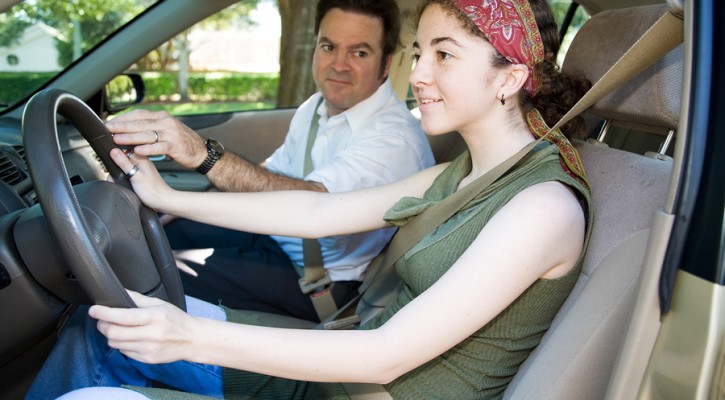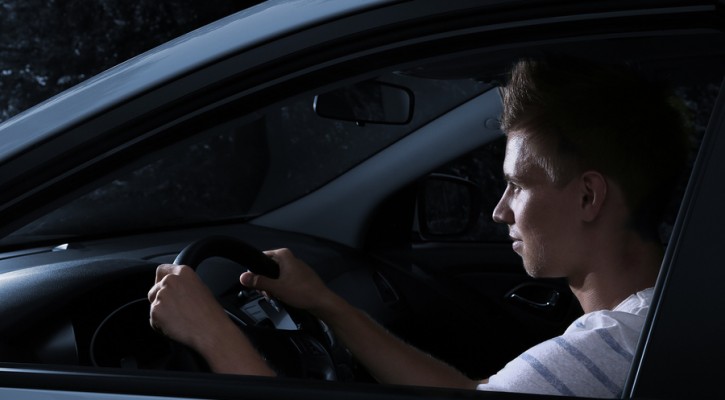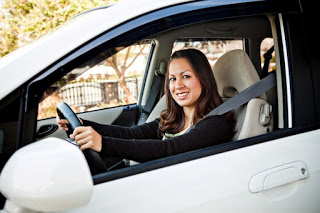Tag Archive: learners permit

Preparing Teens And Their Parents To Drive
July 23, 2014
The AAA has a website designed to help parents and their teens through the teen licensing process. Visitors to the site can select their state to view state GDL laws and the licensing process for that state along with a lot of other good information. For more information, visit: AAA Keys2Drive

Ask The Driving School Instructor: In Florida, can you drive at night with a learner’s permit?
April 21, 2014
Question: Can you drive at night with a learner’s permit in Florida?
Answer: Under Florida law, a driver with a learner’s permit is restricted to daylight driving only for the first three months after receiving their learner’s permit. After the first three month period, you should start to practice driving at night. In fact, your parent or guardian must certify that you have had at least ten hours of supervised driving experience at night but you must receive that training before 10:00 at night. A driver with a learner’s permit is not allowed to drive under any circumstances between 10:00 p.m. and 6:00 a.m.

Worried About Passing Your Driving Test?
October 2, 2012
How much have you practiced your driving skills? The GDL Laws of most states require you to get a learner’s permit or instruction permit first before you get your driver’s license. This is the time when you practice your driving skills either with a parent or driver education instructor. Most states require you to have a minimum of 40 to 50 hours of driving practice during the learner’s permit stage. It is suggested to use a driving experience log so you practice all the maneuvers you’ll be tested on. Here is an example to PRINT.
When you are ready to get your license remember the following driving skills as this is what they will be testing you on during the road test:
- Obey the traffic signals and signs
- Avoid hitting the curb or cones while parking
- Three point turn is the most comment reason for failing the exam – so get lots of practice during your learner’s permit phase especially on narrow streets!
- Put on your seat belt before starting the vehicle.
- Properly yielding to other traffic when changing lanes.
- Using your turn signal when turning, changing lanes, or turning into or backing out of a parking space
- Safe driving around school buses and school zones.
- Maintain a two to three-second following distance.

Study Shows That GDL Laws Work; To An Extent
July 30, 2012
A study published in the Journal of the American Medical Association in September 2011 shows that the death rate for teen drivers under the age of 18 has fallen dramatically over the past several years. However, the good news in this study comes with a downside; the rate of fatal crashes for teen drivers over the age of 18 has risen. The reason for the increase isn’t totally certain but there are a couple of factors that some feel have led to the increase.
The Graduated Driving License (GDL) laws are working as they were designed. GDL laws place restrictions on new teen drivers that limit the number of passengers they can carry, the hours that they can drive, and their ability to use cell phones while driving. These laws were designed to limit all of the distractions that lead to so many teen deaths and, according to the researchers, they have resulted in 1,348 fewer crashes among 16 year olds.
Part of the reason for the increase in the death rate for 18 year olds is that they are now free of those restrictions and, with more passengers in the car and the ability to drive late a t night, they may be entering into driving situations that they have never experienced before and are unable to cope with.
Another reason that some experts have noted is that, with the restrictions placed on 16 year olds to complete driver training prior to getting their license, many teens are now waiting until they are 18 before getting a license. At the age of 18, there is often no requirement for any type of formal classroom or behind the wheel training. The requirement to hold a learner’s permit for a year and document up to 50 hours of supervised driving experience is also lifted for 18 year olds.
By waiting until they are 18, these drivers can often get their license in just a few weeks by passing what is generally a pretty easy driving test at the DMV. They are foregoing a lot of good training that teaches them the skills necessary to avoid collisions on the road.
If you have a teen at home that is waiting until age 18, you should insist that he or she still take all of the required courses required of 16 year olds and get at least 50 hours (ten at night) of supervised driving experience before allowing them to get their license.

Teen Death Rates Decline In States With Strong Graduated Driver License Laws
April 2, 2012
A 2006 study by the Johns Hopkins Bloomberg School of Public Health that showed Graduated Driver License Laws (GDLs) reduced teen death rates by an average of 11% has been backed up by at least two states that have shown a significant decline in their teen fatality rate after enactment of tough new GDLs.
New Jersey’s strong GDL laws will become even stronger with new GDL regulations as a result of recommendations by the Teen Driver Study Commission. The new laws or regulations are:
- No plea bargains for GDL holders (teens can’t plea bargain away points for traffic violations). Teens who accumulate 3 or more points, must attend a 4-hour MVC Probationary Driver Program and be monitored for 12 months. Any accumulation of points during the monitoring period will result in a 90 day license suspension.
- Use of a decal on the vehicle to identify drivers who hold a learner’s permit or provisional license.
- 11 PM curfew for all drivers under the age of 21 who hold a permit or provisional license.
- Limit of passengers to just one – regardless of family affiliation.
The Illinois Secretary of State introduced figures that showed a 53% drop in teen deaths between 2007 and the first 9 months of 2009. Illinois sanctions on drivers during the Initial Licensing Phase include:
- Two moving violation convictions occurring within a 24-month period will result in a minimum one-month driver’s license suspension. Suspension length is determined by the seriousness of the offenses and the driver’s prior driving history. An additional driver’s license suspension will result for each subsequent moving violation following the initial suspension.
- Any moving violation conviction that occurs within the first year of licensure will result in a six-month extension of the passenger limitation, which allows no more than one unrelated passenger under age 20.
- Suspended drivers are required to attend a remedial education course, may be retested and must pay a $70 reinstatement fee.
Parents who don’t live in a state with a strong GDL law, can impose their own strict restrictions. If you are not sure what the GDL law is in your state, visit your state’s web site or: http://www.iihs.org/iihs/topics/t/teenagers/qanda#teenagers–graduated-driver-licensing
